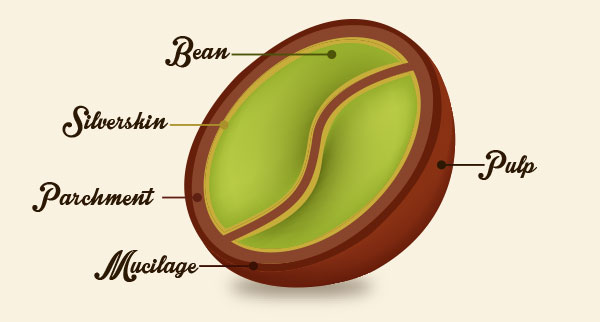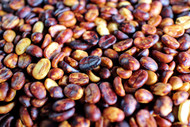You’ve heard of Honey Coffee, Right?
Posted by Hala Tree Coffee on Oct 17th 2019
Indulge in the exquisite allure of Honey Coffee, a beloved favorite that has taken the coffee scene by storm.

But what exactly is Honey Coffee?
Before delving into the intricacies of the Honey Coffee process, let's acquaint ourselves with the various components of a coffee bean. This exploration will provide valuable insight into why the honey coffee method deviates from the conventional washed process.
- Pulp: The outer skin of the coffee fruit, known as the pulp, is typically separated from the bean in most coffee processing methods. Once detached, the pulp can be dried independently to produce a tea known as Cascara.
- Mucilage: Beyond the pulp lies the mucilage, a sticky substance enveloping each of the two seeds. Sometimes referred to as honey due to its sticky sweetness, the mucilage is the very element that imparts the delightful taste to Honey Coffee.
- Parchment: A thin layer of cellulose that shields each coffee seed is termed parchment. After the drying process, this layer, resembling parchment in texture, remains. The subsequent step involves removing the parchment, leaving us with green coffee beans.
- Silverskin: An even thinner layer with a silver sheen, the silverskin coats the seed and is shed during the roasting process.
- Seed/Coffee Bean: The coffee bean typically consists of two seeds within one fruit, except in the case of Peaberrie coffee, where only one small bean is present in the fruit. Remarkably, peaberries constitute only 5% of a farmer's crop.
Honey Coffee Process:
Now equipped with an understanding of the coffee cherry's components, let's delve into the distinctive process of creating Honey Coffee.
In this method, cherries are meticulously hand-picked and passed through a pulper to separate the pulp from the coffee beans. The key departure in the honey process lies in the fact that the coffee beans undergo no washing. Consequently, the beans are left to dry with the mucilage persisting on the parchment, imparting a unique quality to the coffee.

